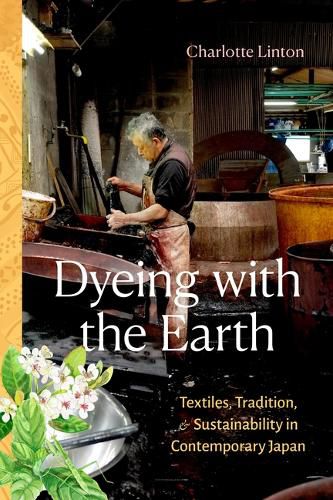Readings Newsletter
Become a Readings Member to make your shopping experience even easier.
Sign in or sign up for free!
You’re not far away from qualifying for FREE standard shipping within Australia
You’ve qualified for FREE standard shipping within Australia
The cart is loading…






In Dyeing with the Earth, Charlotte Linton explores the intersection of small-scale traditional craft production with contemporary sustainability practices. Focusing on natural textile dyeing on the southern Japanese island of Amami Oshima, Linton details the complex relationship between preservation practices, resource extraction, and land access in the production of Oshima tsumugi kimono cloth, which uses the indigenous technique of dorozome (or mud-dyeing). As global interest in sustainable fashion grows, textile manufacturers on Amami have expanded from kimono production to dyeing garments and textiles for high-profile designers. While traditional craft may appear at odds with the large-scale global textile industry, Linton reveals how Amamian producers face similar social, economic, and environmental pressures. Ethical production in fashion, Linton contends, should focus on understanding local, everyday practices that sustain direct relationships between people, place, and the environment rather than relying on short term solutions via new processes or materials. Weaving ethnography, photography, and drawing, Linton underscores the continued relevance of traditional craft and material cultures amid ongoing climate change and biodiversity loss.
$9.00 standard shipping within Australia
FREE standard shipping within Australia for orders over $100.00
Express & International shipping calculated at checkout
In Dyeing with the Earth, Charlotte Linton explores the intersection of small-scale traditional craft production with contemporary sustainability practices. Focusing on natural textile dyeing on the southern Japanese island of Amami Oshima, Linton details the complex relationship between preservation practices, resource extraction, and land access in the production of Oshima tsumugi kimono cloth, which uses the indigenous technique of dorozome (or mud-dyeing). As global interest in sustainable fashion grows, textile manufacturers on Amami have expanded from kimono production to dyeing garments and textiles for high-profile designers. While traditional craft may appear at odds with the large-scale global textile industry, Linton reveals how Amamian producers face similar social, economic, and environmental pressures. Ethical production in fashion, Linton contends, should focus on understanding local, everyday practices that sustain direct relationships between people, place, and the environment rather than relying on short term solutions via new processes or materials. Weaving ethnography, photography, and drawing, Linton underscores the continued relevance of traditional craft and material cultures amid ongoing climate change and biodiversity loss.